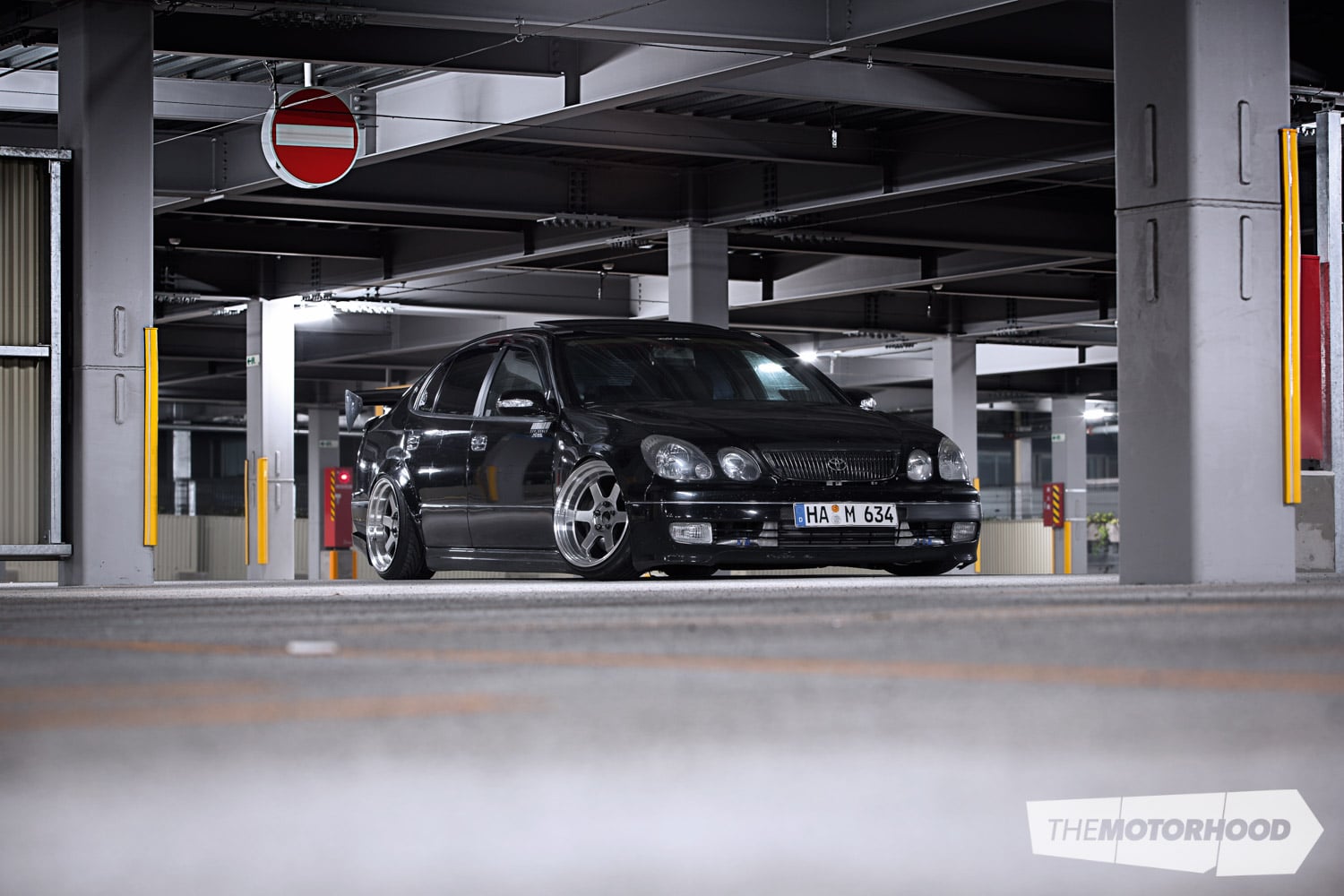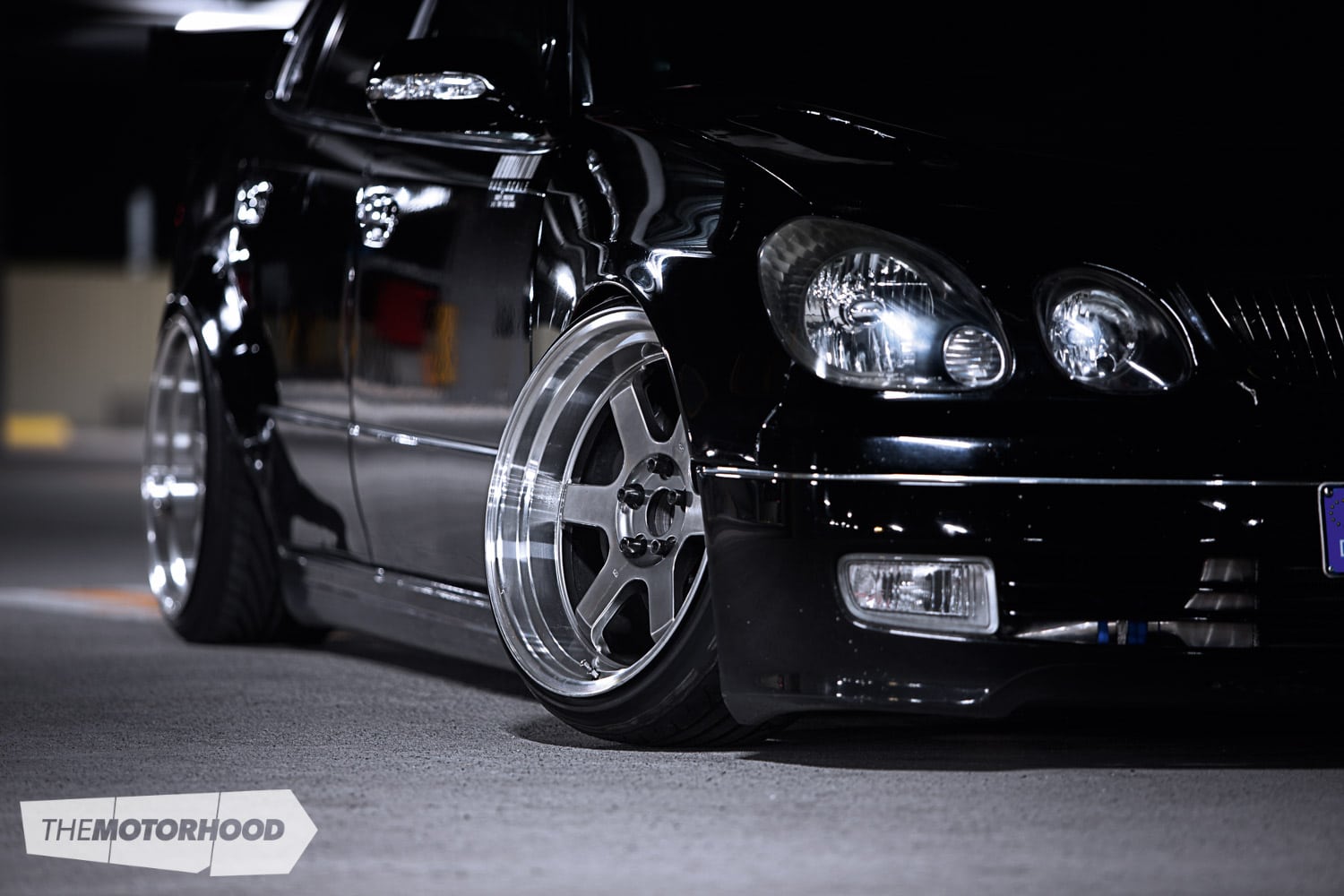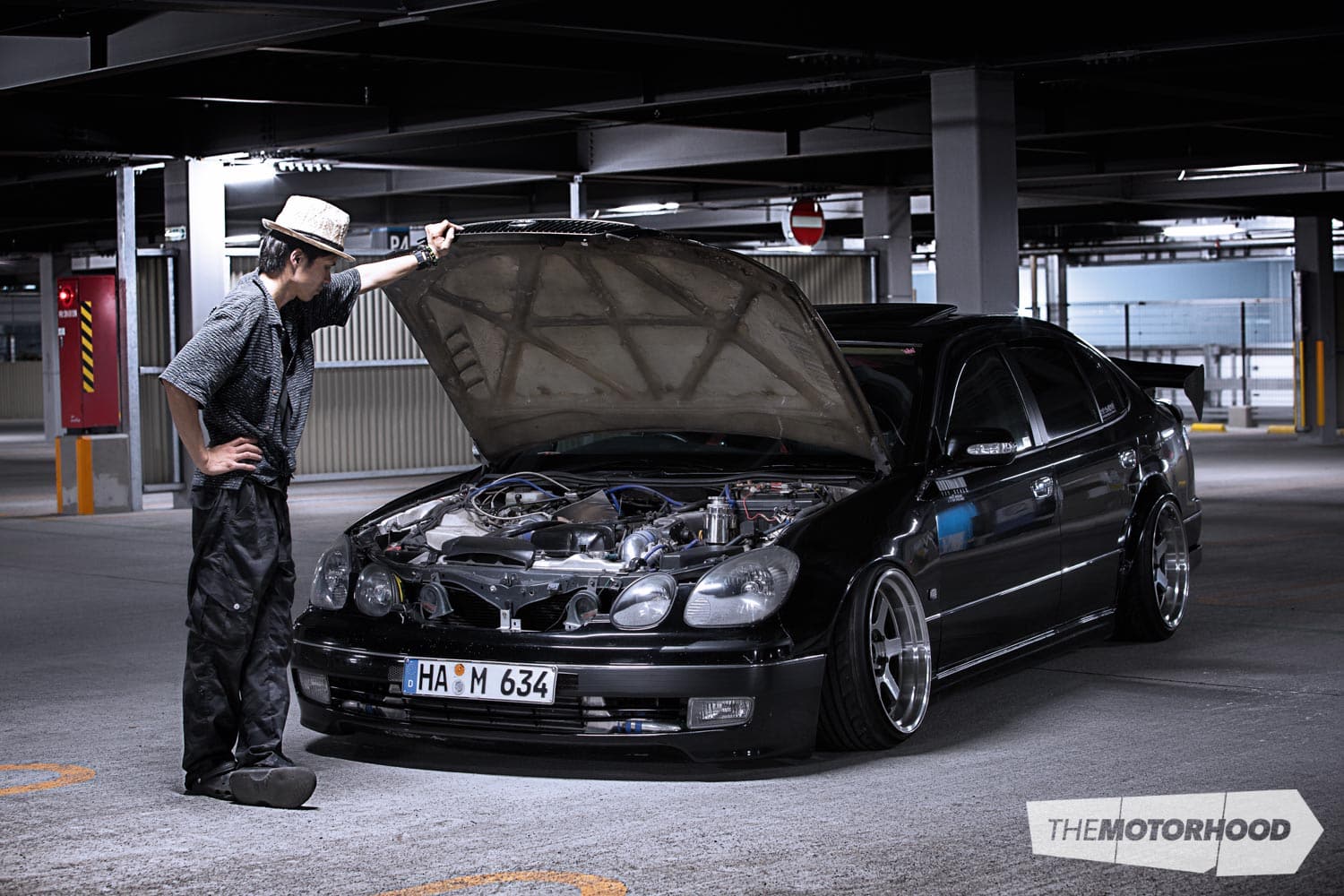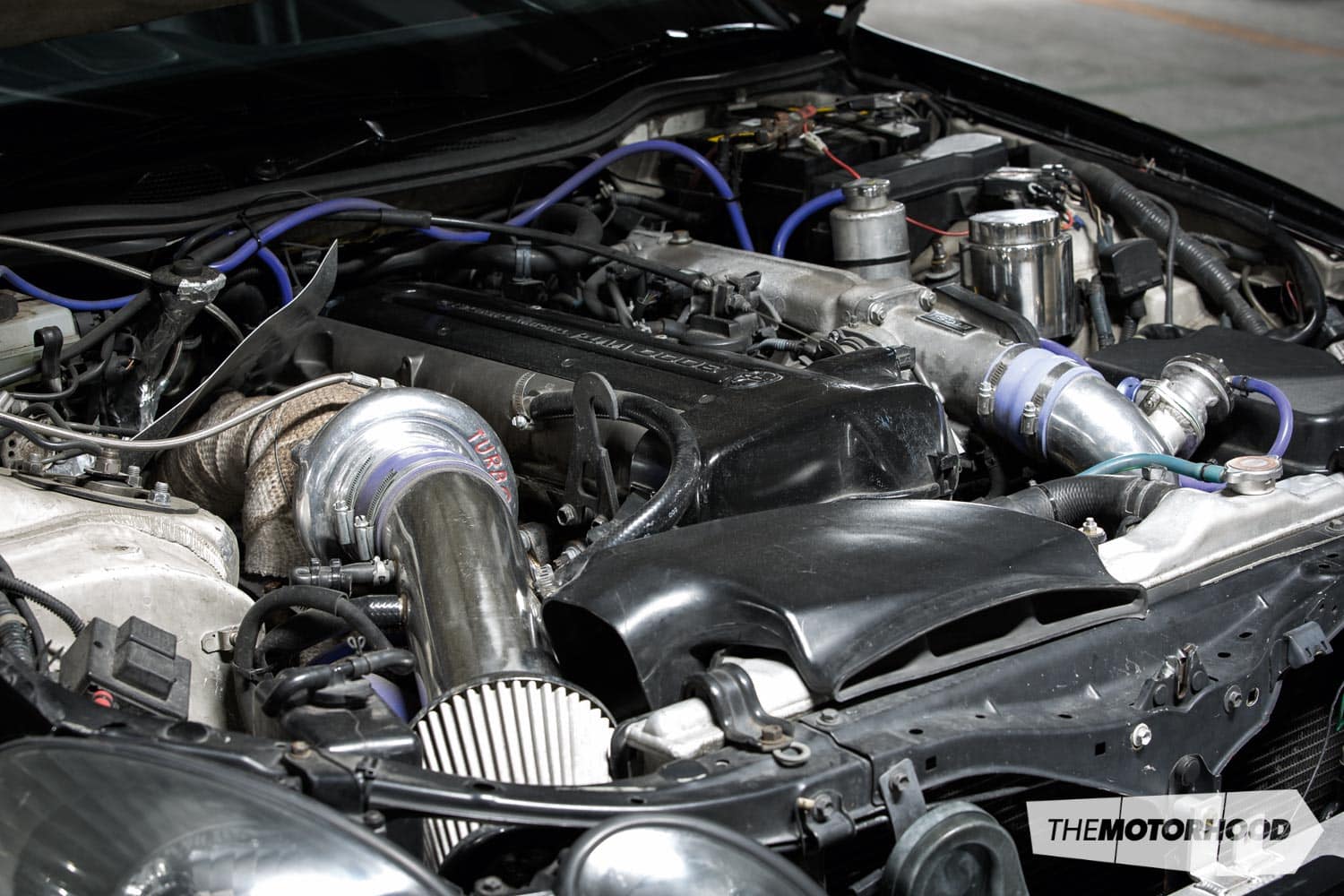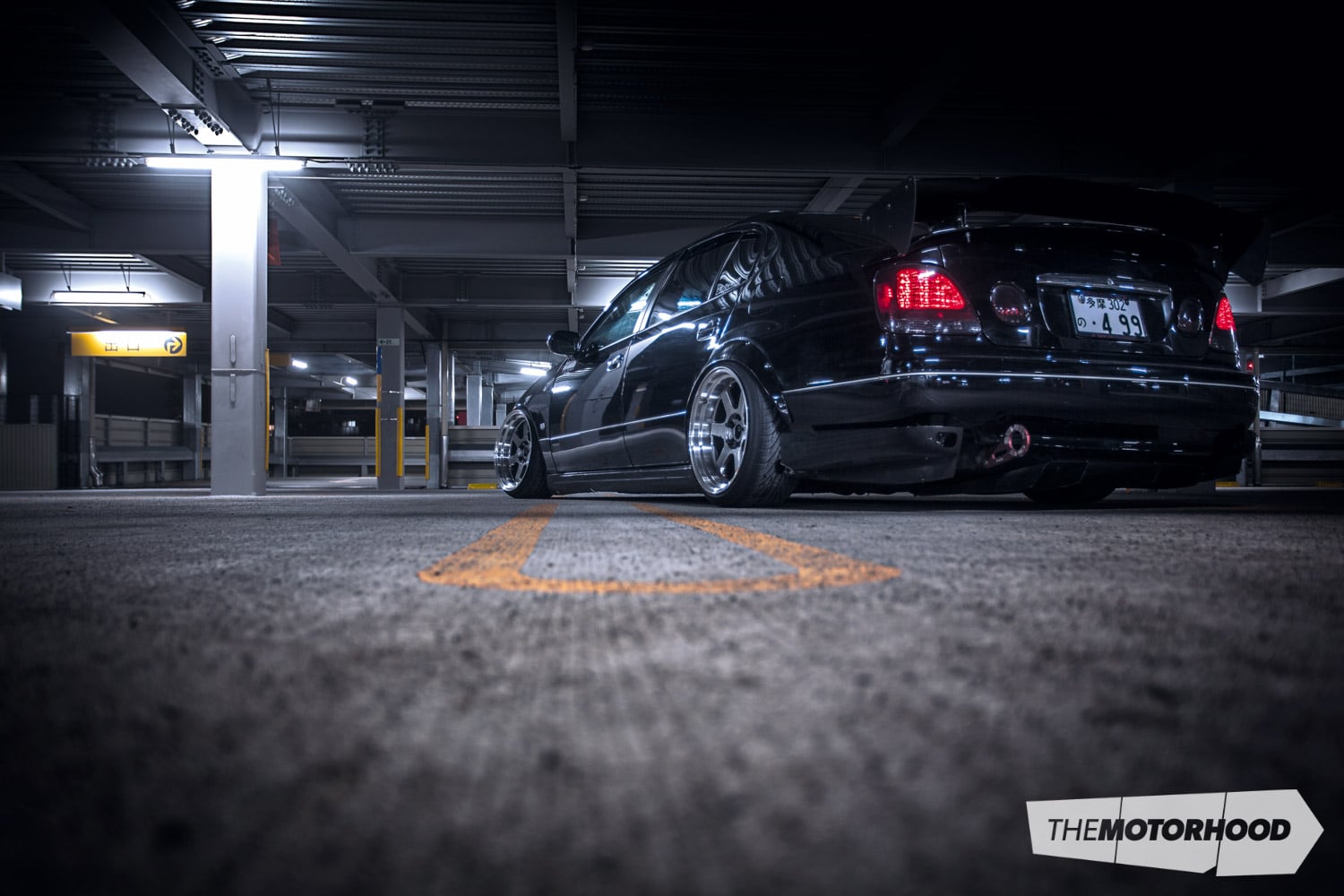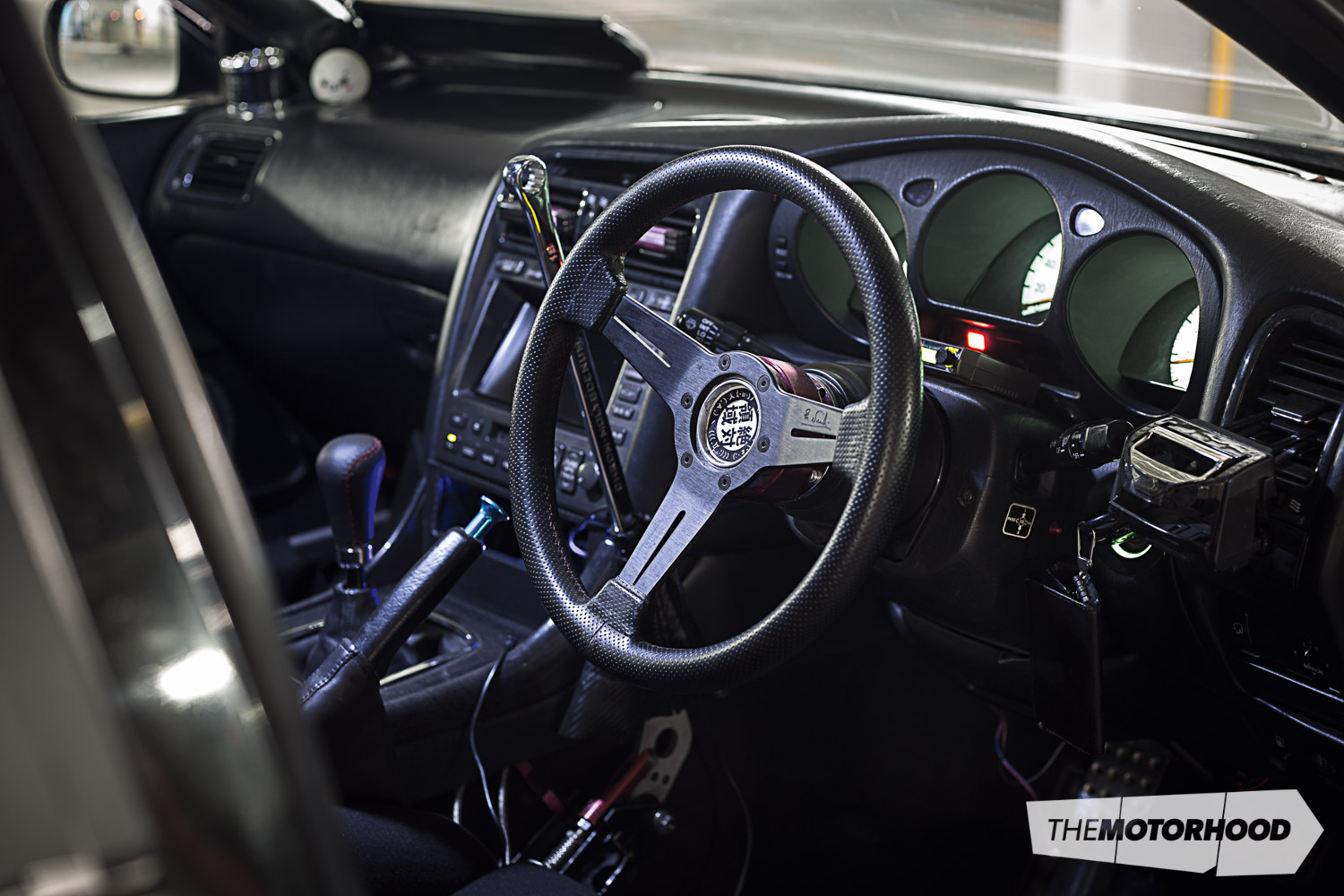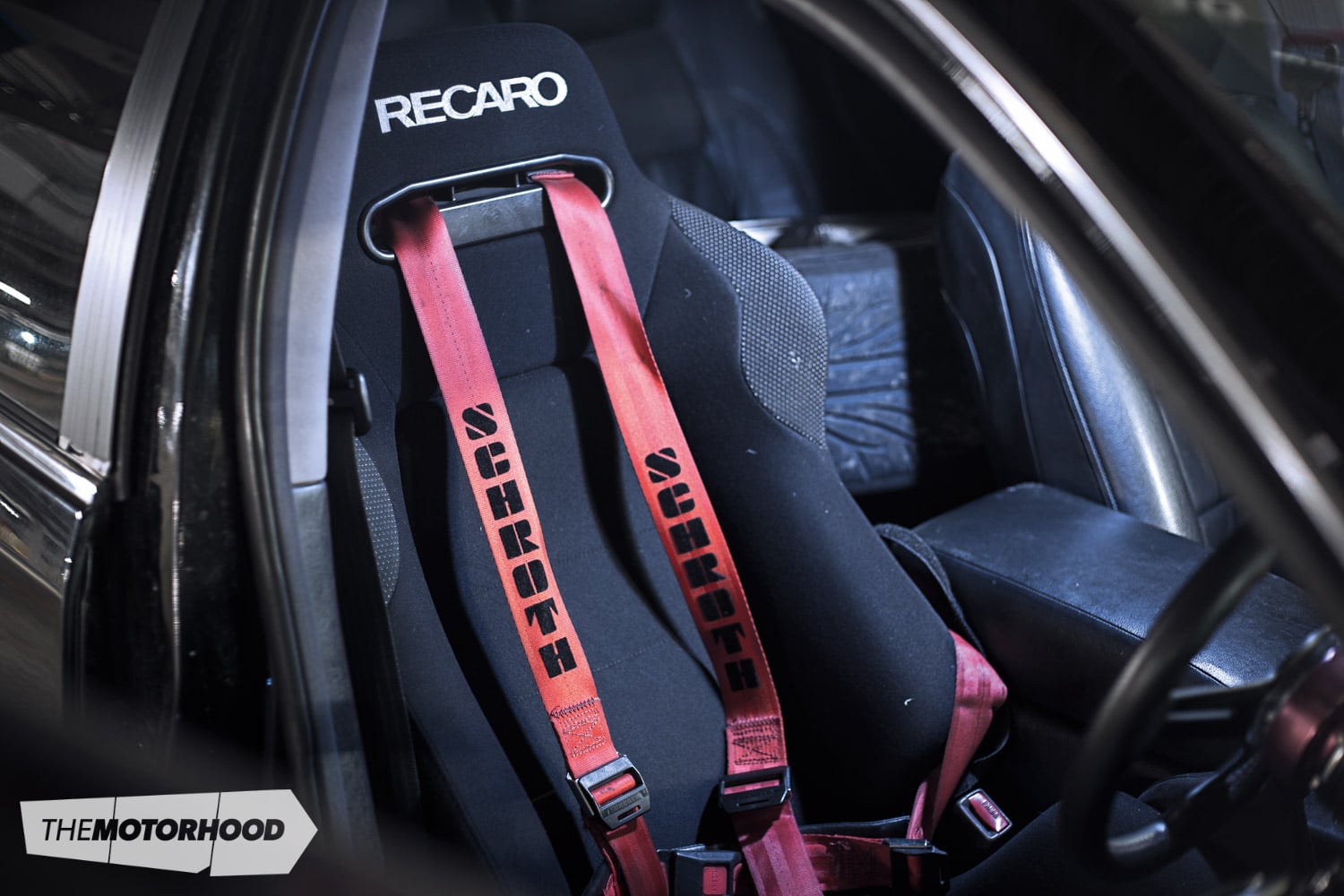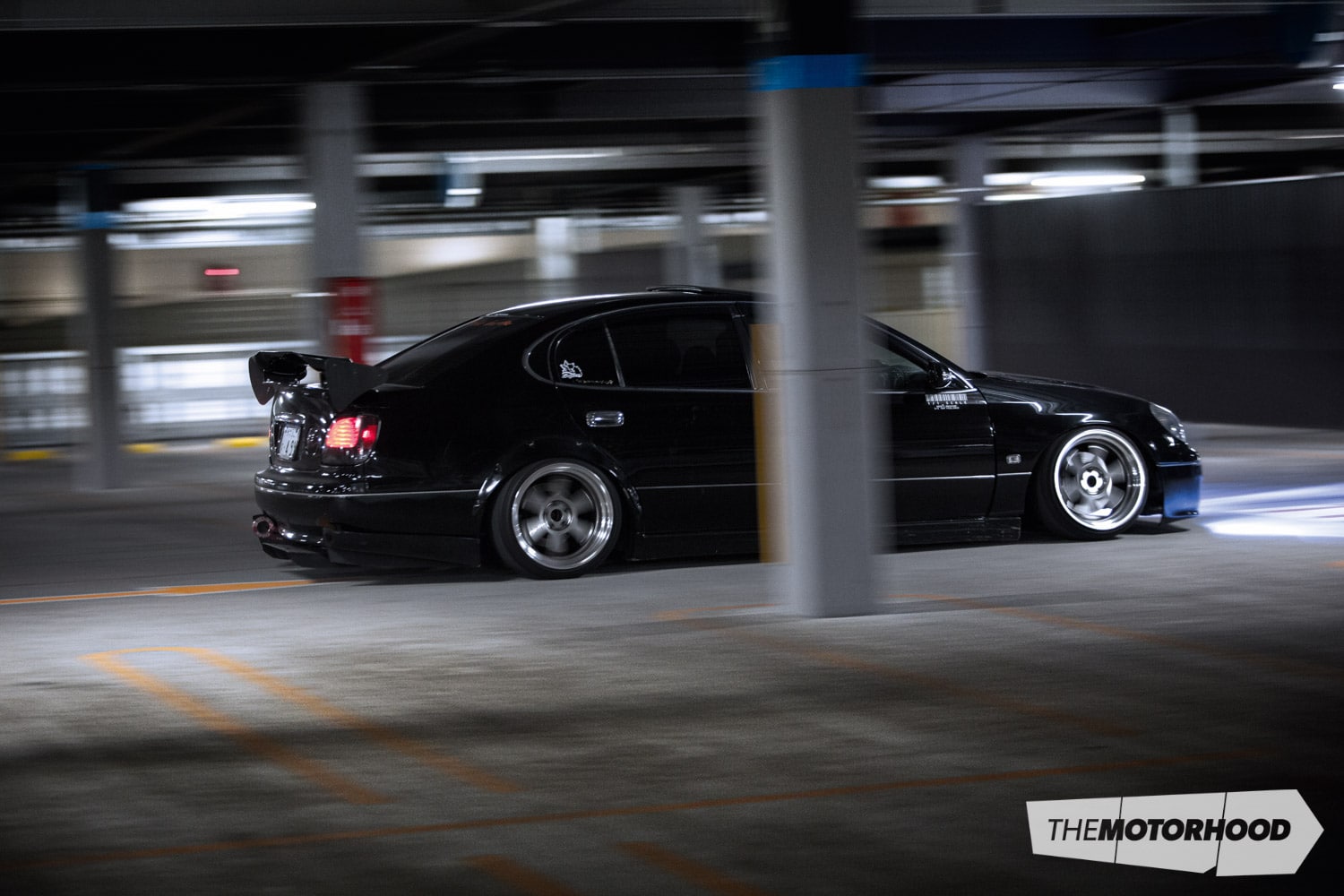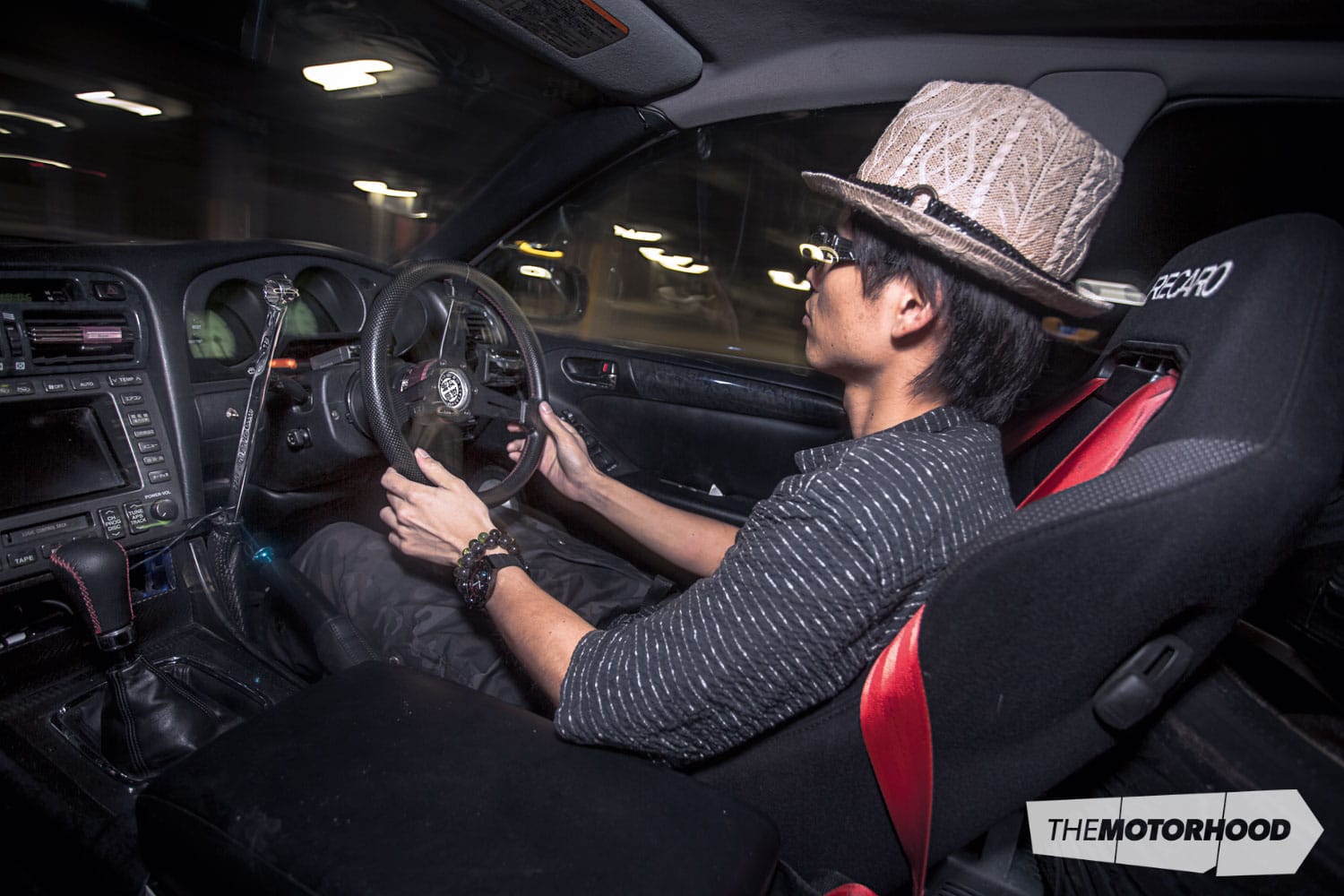data-animation-override>
“‘Gangster’ is a bit of a cliched descriptor for a car, but we can’t think of anything more fitting when talking about Kai Hamada’s Aristo drifter”
A couple of weeks after being in Japan, I’d been to a few events but was missing the joy that comes from spending half a day with one car and a bunch of camera gear, so I decided it was time to find a cool car to shoot for an NZ Performance Car feature. The thing was, I didn’t want to go into yet another awesome Japanese tuning shop and arrange to shoot one of its admittedly amazing showroom cars. I wanted to go out and find a real car — a car owned by a regular enthusiast, something that you might see out on the local touge or street meet.
Of course, it had to be damn cool as well, but, in Japan, that’s not exactly the hardest requirement to answer. I decided my best course of action would be to ask my local contact and good mate here, Toby, if he knew of anything fitting the bill. He had a long list, but it wasn’t until he showed me a crappy phone camera image of the menacing 1998 Toyota Aristo V belonging to his friend Kai Hamada — or Hamakai, as he is more commonly known — that I stopped him immediately. “That’s the one!” I said. I’ve always had a thing for big-body cars, especially sliders, and, after a few more questions and a quick message to the man himself, we were on for a late-night photo shoot.
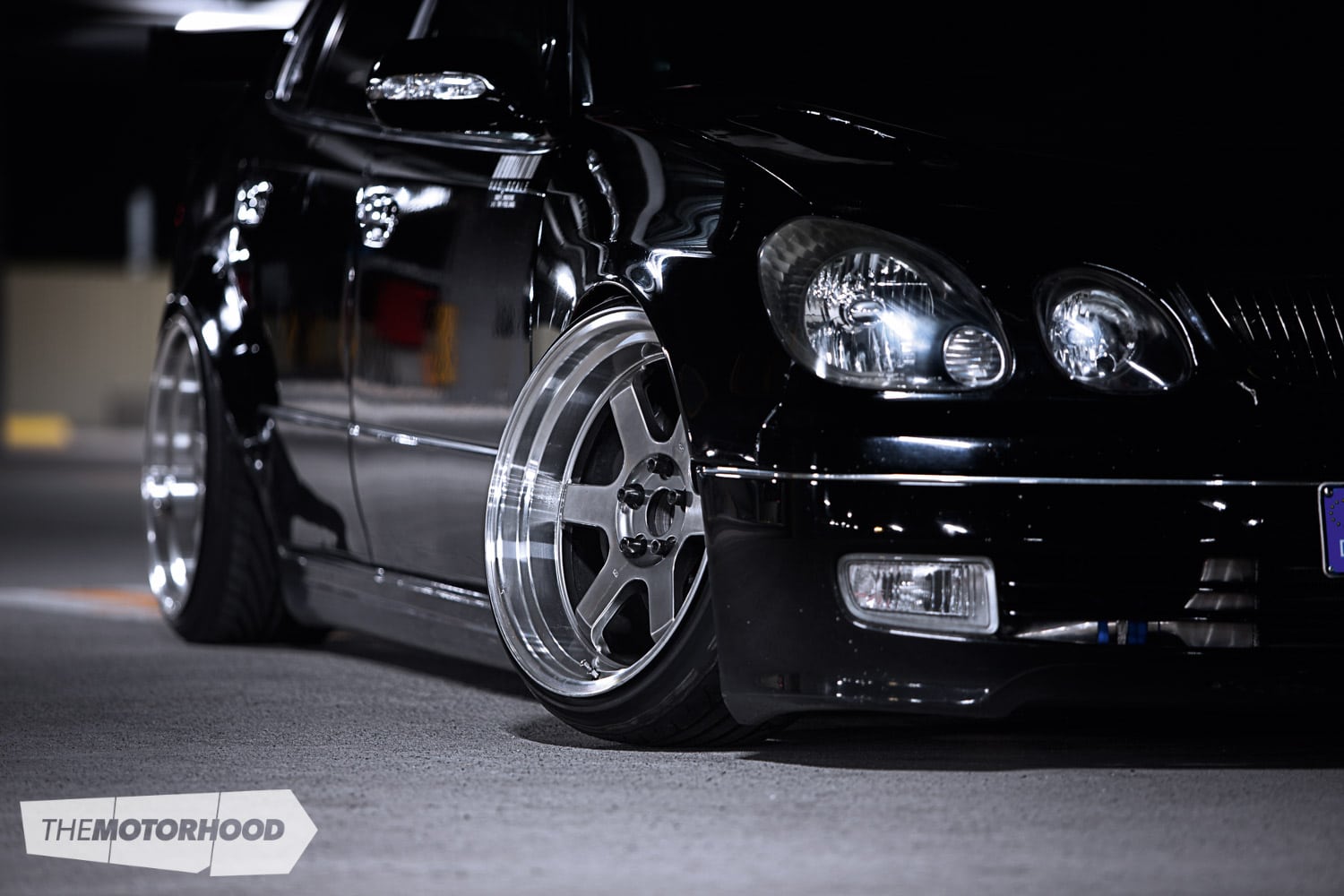
Heading out into the suburbs of Tokyo the following evening, I didn’t know quite what to expect. Sure, I’d seen a couple of photos, but they were really grainy, and the information on the car was a little scarce. Still, I decided to trust in Toby’s judgement anyway. “I think he’s just around the corner,” he said as we approached a car wash similar to our Washworld. I was disappointed to see the place mostly deserted save for one guy washing a Jaguar slammed on big Viennas, but, as my eyes adjusted, I began to make out another dark shape in the corner of the courtyard. It was Hamakai’s jet-black JZ161 Aristo, and it was much better than it looked in the photos. The low-slung Toyota had a menacing air to it, with its blacked-out windows, squat stance, and super-aggressive aero — the whole car looked almost as if it had been made exclusively for terrorizing the streets at night.
After some introductions, with rain threatening, we jumped into our cars and began following Hamakai to a perfect undercover spot. Sure enough, flashes of lightning could be seen in the distance as we tailed the Aristo — it looked amazing skulking through the suburbs, as reflections from the overhanging street lights danced across the bodywork, broken up by the arsenal of diffusers and wings at the rear of the car.
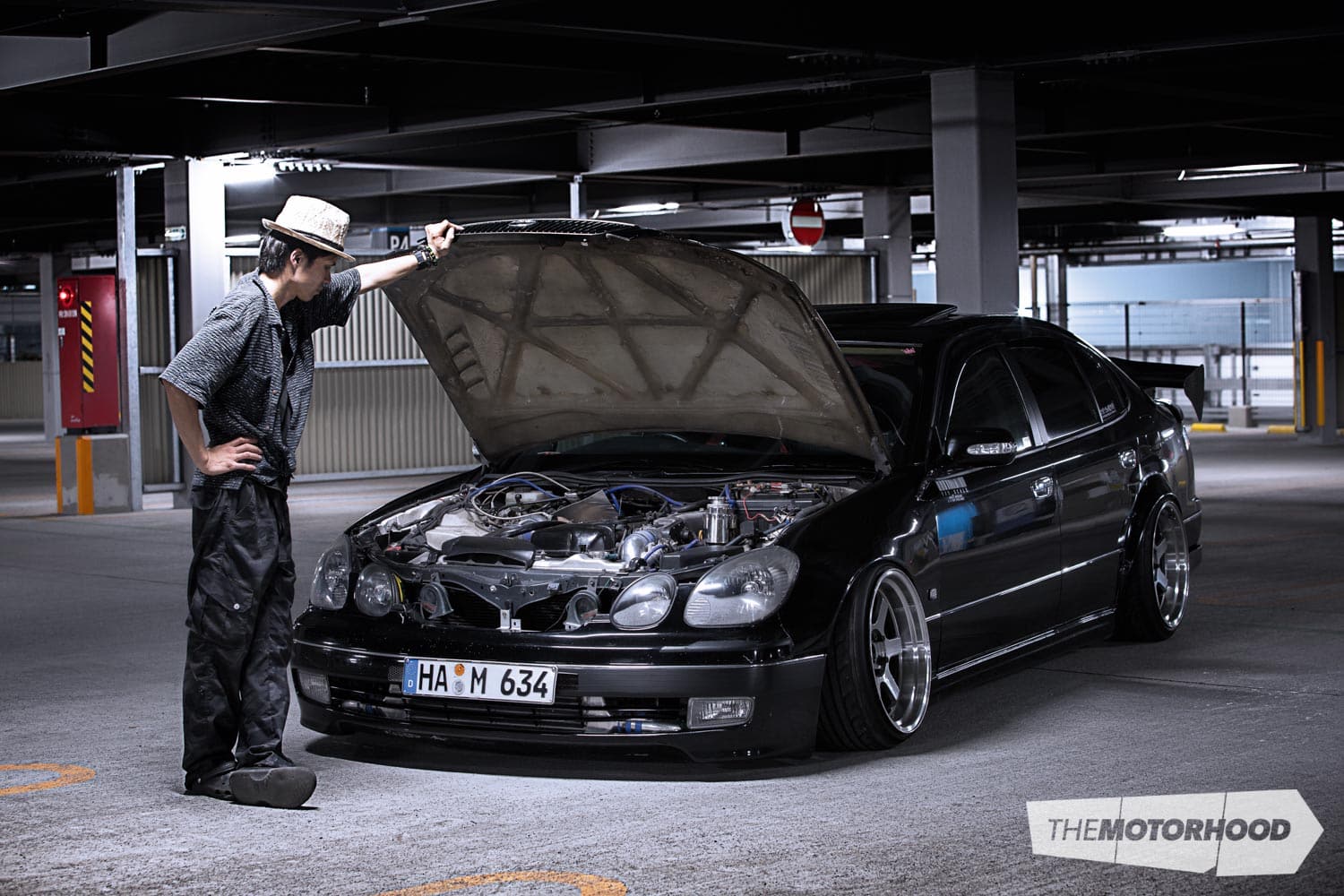
Getting to our location just as the massive electrical storm reached us, we settled in for a long night of vending-machine coffee and growling 2JZ goodness.
“My parents liked cars, so, as a child, I did too,” Hamakai told me through a translator as I set up the camera equipment. “I went to watch all the F1 races and the GT championships at Autopolis, and the first time I gripped the steering wheel was when I was in kindergarten. I sat on my grandfather’s lap and drove with him. I didn’t start to like drifting until after I went to see it on the touge when I was 20 years old, though. I bought my first drift car, an S14 Silvia, when I was 21, and this [was] … when I started getting into low cars, big camber, and deep-dish wheels, and I gradually started to change driving styles from grip to drifting.”
Before Hamakai lived the Aristo life, he was already well-known locally for his equally large JZS170 Toyota Crown street-drift car, which he only got rid of to build the new one. “The Crown was a 1JZ-GTE with an R154 gearbox. It was fun, but, in the end, it was having electrical problems, and it was getting too damaged from all the times I had ‘bumped’ it, so when I saw the Aristo for sale for ¥100K (about $1K), I decided to buy it. I was already interested in Aristos because of the factory turbo 2JZ-GTE motor, [they look] … sporty but luxurious, and I thought [one] … would work well with GT wings and diffusers.”
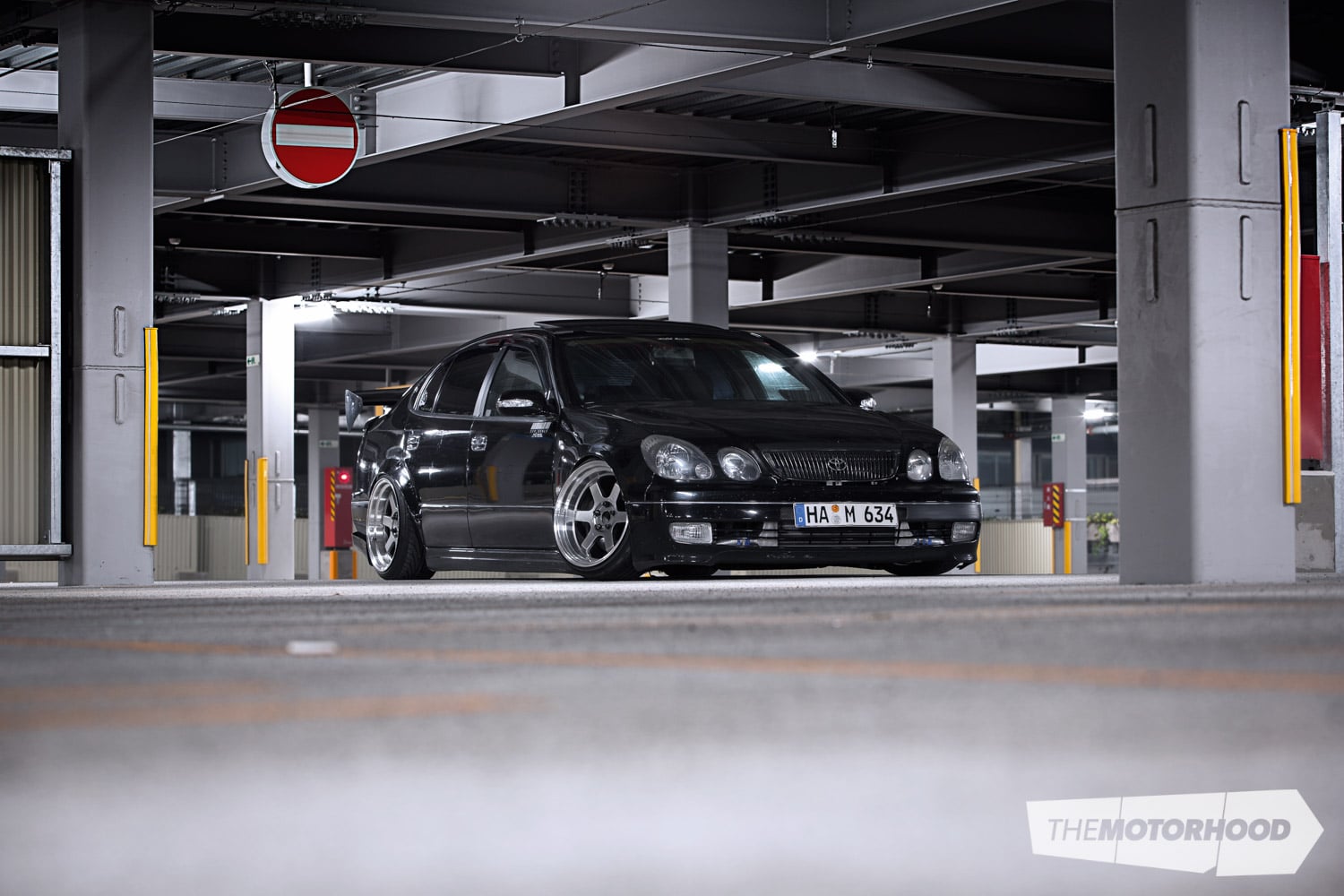
Over the next few months, many hours were spent getting the exterior looking exactly as Hamakai envisioned it, and it’s fairly obvious that his earlier predictions were spot on. The car looks amazing, with its rear end a wash of sharp, aggressive carbon fibre and this combined with the slammed ride height and wide wheels sitting under fibreglass over-fenders. In regards to the wheels — get ready for a bombshell here — though I was initially sure something must have been lost in translation, it turns out the wheels that were on the Toyota for the shoot (Hamakai has a few sets) are actually replicas of the Rays Volk TE37V, not the genuine item. This made sense, considering I’d never heard of an 18-inch version of that wheel.
As it turns out, Rays only makes the V up to 17 inches in diameter and 9.5 inches wide. Hamakai wanted bigger and wider in that style, so instead went with another brand that produced a replica in the 18×10-inch size he was after. Don’t worry, I’m well aware of how crazy that sounds in Japan, of all places, but, believe it or not, judging by what I’ve seen recently, the Japanese seem to care much less about rep. wheels than you’d expect, and there’s quite a growing market for these products as cheap bangers you don’t have to worry about when hitting the touges and jumping ripple strips — just because it’s Japan, it doesn’t mean genuine wheels are cheap! We even saw Rota Wheels banners at a Drift Muscle day at Honjo circuit the very next weekend — what a head-scratcher!
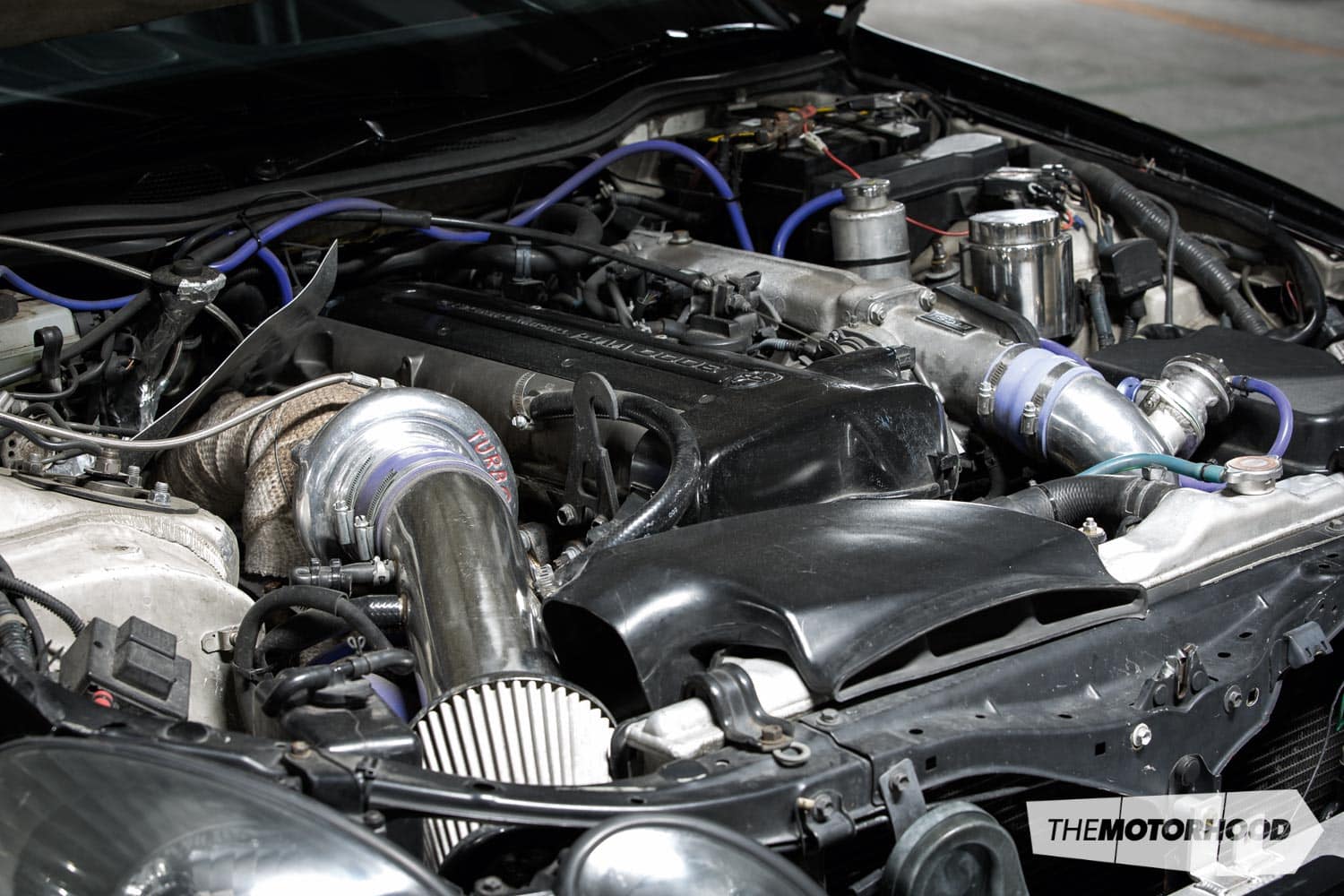
In classically Japanese style, the engine bay is certainly nothing too special to look at, but Hamakai has put some effort in where it counts by adding a decent amount of power to the Aristo. The factory twin-turbo set-up was replaced with a big single Turbonetics T66 (another oddity, considering Turbonetics is an American company), which, when combined with all the supporting modifications and a tune on the GReddy e-Manage ECU, gives 331kW at the wheels. Obviously, the factory automatic transmission was not very useful for Hamakai’s intended purpose, so it was replaced with a tried-and-true R154 five-speed from a JZX110 Mk II that works with the Exedy carbon twin-plate and Tomei two-way limited-slip diff out back.
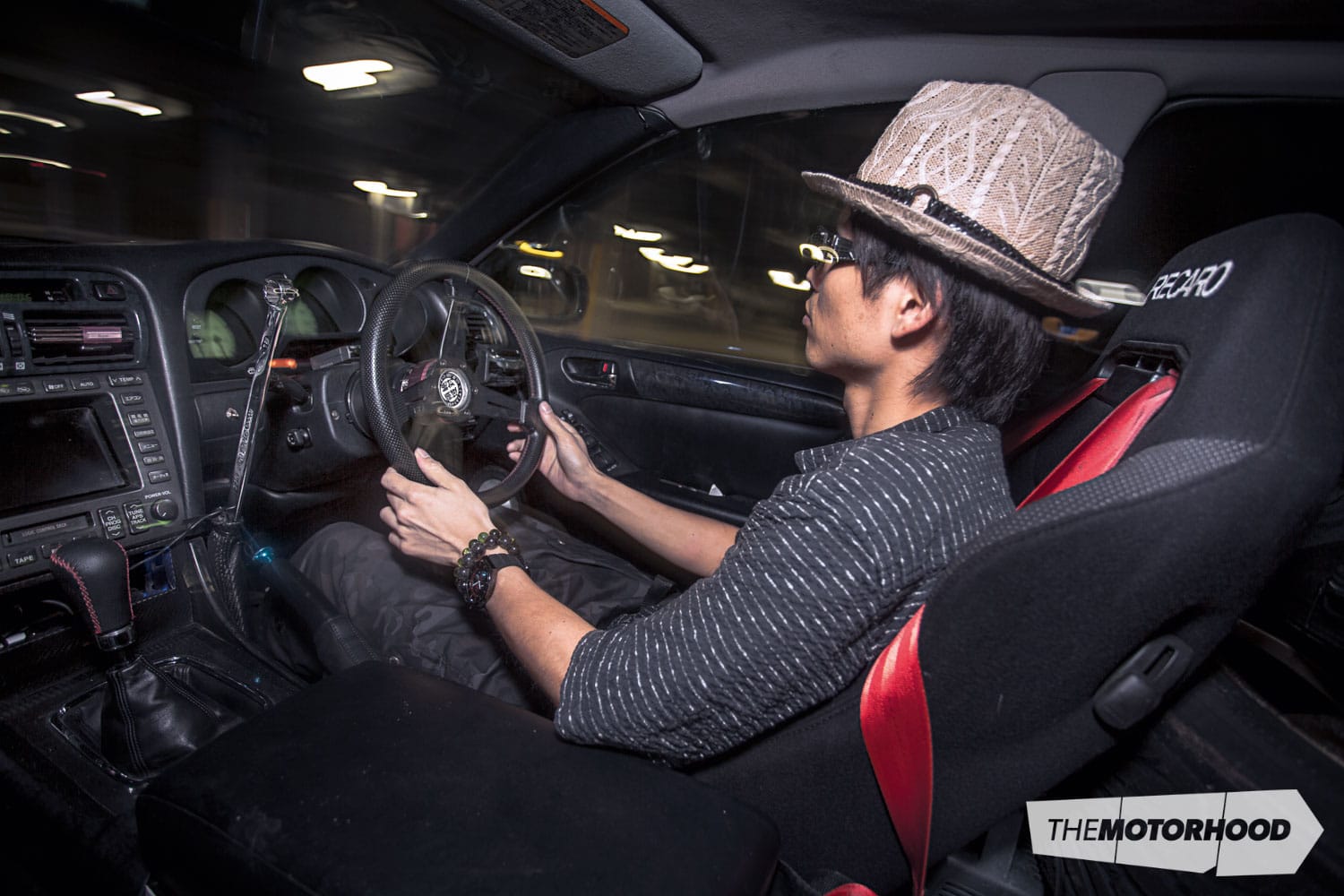
With plenty of steering modifications to allow for big lock, a huge increase in track, and HKS Hipermax coilovers running extremely stiff 326 Power springs, the street-legal Aristo was ready to hit the streets, which it does very regularly. “Sometimes it’s difficult to get around Tokyo because it’s so low,” Hamakai explained, “but it’s not a problem for me, because it’s a car that I always drive and am used to. I think that it’s worth driving around town in a low car — the good outweighs the bad.” He is also a regular up in the mountains surrounding Tokyo and at local circuits like Honjo and Nikko. “I love the touge,” he told me as we finished the photo shoot. “It’s fun to get out of the city with my friends late at night and enjoy the car. Though, because [the Aristo] is so heavy, it covers more distance than a lot of the other cars up there when sliding — you really have to think about the speed and the line a lot more.”
With everything all packed up, I thanked Hamakai for giving up his night to show me his amazing Aristo then watched the car shudder off and down the access ramp from our spot up on the sixth floor of a parking building. Walking to the edge of the building, it was still like a scene from a horror movie outside, and, amid all the bright flashes of forked lightning hitting buildings nearby, Hamakai could be seen exiting the building, creeping out onto the street, and squeezing on the throttle. The Turbonetics external wastegate screamed as the smooth black car swung out and began tagging its way down the street through first, second, then third gear. If I ever wanted to know what sort of sound can overpower thunder directly over your head, now I do …
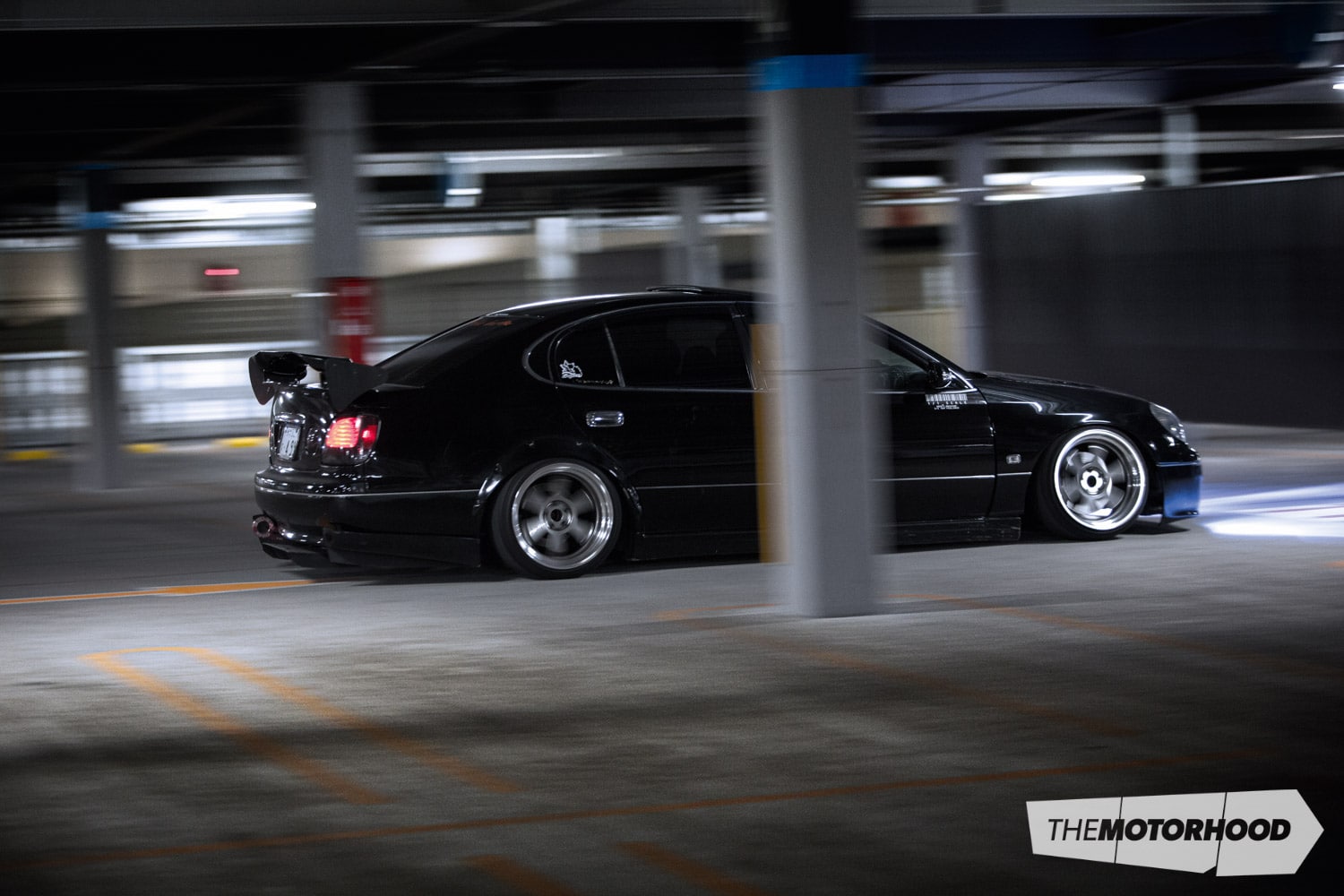
Cars like Hamakai’s JZ161 (and many of the grass-roots drift cars in Japan) really make you realize that you don’t have to go absolutely crazy tube framing, caging, and building a motor for 500kW when you just plan to attend some track days and have a bit of fun. It also makes you realize you don’t have to build a cookie-cutter Silvia, Cefiro, or Skyline just because everyone else has. Like how a car looks? Does it have drift potential? Build it! Sure, it might not carry you all the way to the D1NZ podium, but I’m pretty sure Hamakai has no intention of achieving D1GP glory either, but that hasn’t stopped him building and enjoying an incredibly bad-ass midnight drift machine!
Photos: Peter Kelly
1999 Toyota Aristo VJZ161
Engine
- Model: Toyota 2JZ-GTE 3000cc straight-six
- Block: Factory
- Head: Factory
- Intake: HPI four-inch stainless intake pipe, HPI intercooler and piping
- Turbo: Turbonetics T66
- Wastegate: Turbonetics 50mm
- BOV: Trust RS
- Fuel: Sard 265-litre in-tank fuel pump
- Exhaust: Custom stainless manifold, Fujitsubo mufflers, four-inch downpipe, 3.5-inch stainless exhaust system
- Cooling: Sard alloy race radiator
- ECU: GReddy e-Manage Ultimate
Support
- Struts: HKS Hipermax
- Springs: 326 Power
- Other: Custom extended lower control arms, custom steering knuckles, custom Kazucchi steering-rack spacers
- Brakes: (F) XF20 Toyota Celsior discs and calipers, (R) JZS171 Toyota Crown discs and calipers, custom hydraulic handbrake
Driveline
- Gearbox: Toyota R154 (JZX110) five-speed manual
- Clutch: Exedy carbon twin-plate
- Diff: Tomei two-way limited-slip
- Other: Custom strengthened driveshaft
Shoes
- Wheels: (F) 18×10-inch +25 TE37V replicas, 30mm spacers; (R) 18×10-inch +25 TE37V replicas, 70mm spacers
- Tyres: (F) 215/35R18 Nexen N9000, (R) 225/40R18 Kenda
Exterior
- Paint: Factory black respray
- Enhancements: Factory aero front bumper, K-Break side skirts, Abflug rear diffusers, Abflug rear wing, fibreglass bonnet
Interior
- Seats: (Driver) Recaro SR5
- Steering wheel: Nardi 330mm
- Instrumentation: Blitz R-Vit DS
Performance
- Power: 331kW (444hp) at the wheels
- Weight: 1650kg





